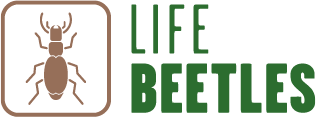- A. Preparatory actions
- C. Conservation actions
- D. Monitoring of the impact of the project actions
- E. Public awareness and dissemination of project results
- F. Project management and progress
A. Preparatory actions
C. Conservation actions
C.1 Improvement of habitat quality for Tarphius floresensis, Pseudanchomenus aptinoides and Trechus terrabravensis
This action will focus on the improvement of existing habitat for the three target species. The action targets a set of parcels which are affected, at different levels of intensity, by the spread of Invasive Alien Species (IAS) of flora and the decrease of the soil cover by bryophytes and ferns.
The conservation actions taking place are of two types of framework:
– On more pristine areas, where IAS are on early stages of invasion, the control/eradication works will be done by hand (uprooting IAS, shredding, etc), with teams of operational staff specifically trained.
– On areas where larger/denser populations of IAS have established, more intensive best-practice works will be required to promote the initial control (cut and controlled application of herbicides, etc). A “single time” execution, will be contracted to complement the daily work of the permanent operational teams.
These actions will take place on the three islands: Flores, Pico and Terceira.
C.2 Pilot works for increasing habitat connectivity for Trechus terrabravensis under a climate change context
This action consists in using pilot works to increase the connectivity between two known habitats of Trechus terrabravensis in Terceira island and considering the predicted movement of the species under climate change.
This action proposes to re-naturalize two parcels of eucalyptus forest. This will entail the cutting/removing of the existing Eucalyptus sp trees, and even though most of the wood will be expected to be removed, a small part is expected to be laid on site to support further works.
These works include the execution, by hand, of wooden piles, water-retention and/or erosion control devices and other nature-based solutions that can promote better on-site conditions for habitat conversion and restoration.
Besides this, high density planting of native trees and shrubs will take place (e.g. Juniperus brevifolia, Erica azorica, Laurus azorica, etc) to ensure long-term suitable habitat.
C.3 Pilot/Demonstration works for increasing habitat for Pseudanchomenus aptinoides and related ecosystem services
This action entails the re-naturalization of pasture grassland in order to increase the habitat of Pseudanchomenus aptinoides in Pico island.
A total of four parcels of pasture grassland adjacent to the current habitat for this species will be re-naturalized in order to allow for the increase of the habitat. These parcels are located within a catchment area that is used for municipal water supply. This will allow for and easier re-establishment of native shrubland, while leveraging a diverse cover (including various native shrubs, and subsequent colonization by ferns and bryophytes). Works will reduce runoff, improving retention and infiltration, and provide better long-term water supply. More specifically the works will entail the execution, by hand, of small, nature-based water runoff retention devices (along the water lines), as well as nature-based “palisades” that facilitate the uptake and condensation of water from the air. High density planting of native trees and shrubs to ensure long-term suitable habitat, and the promotion of native fern spore dispersal will also take place.
C.4 Pilot/Demonstration works for creation of a favorable green infrastructure for Tarphius floresensis within peri-urban areas
This action seeks to essay whether habitat quality improvement and increase can play a role in conservation on fragmented mosaics of habitat of Tarphius floresensis in peri-urban areas in Flores Island.
By focusing on riparian areas – a degraded mesh of ecological corridors, along water lines, embedded on the unfavorable matrix of urban/agricultural land – this action seeks to improve their quality, delivering a more favorable continuum of improved habitat for Tarphius floresensis, of a green infrastructure type.
To attain that, concrete works will focus on overcoming threats identified in these areas as for example the dense presence of IAS (mostly Hedychium gardnerianum and Pittosporum undulatum) and the erosion of margins due to increasingly frequent storms and absence of soil cover.
Works on control of IAS, solutions which may use geotextiles based on natural fibers to mitigate erosion of the riverbeds and margins and to avoid landslides will be used. Also, water retention devices (along the water lines), as well as soil barriers and supported terraces will be placed, that can create more adequate conditions for planting and further growth of native flora.
C.5 Land Stewardship and Volunteering Program
This action aims at engaging key local stakeholders to undertake specific conservation tasks, while helping to improve conservation goals. It targets Environmental NGO’s (and their users/members) and the resident population (families).
The concrete works of volunteering with the target audiences are expected to start after conclusion of the initial concrete conservation works undertaken with the previous C actions. Parcels to intervene will be of easier access and the works will include: hand pulling of IAS; collecting and piling wood to promote its natural degradation; planting and sowing native trees and shrubs; collecting seeds; watering previously planted trees and shrubs; spreading spores from native ferns; and building and/or restoring nature-based devices.
D. Monitoring of the impact of the project actions
D.1 Monitoring the project’s output and impact on conservation and LIFE Key Performance Indicators
As part of the LIFE program there are mandatory tasks that have the purpose of monitoring, assessing and reporting the outputs and impacts of the project works on the conservation problems addressed and the selected LIFE Key Performance Indicators (KPI).
Tasks include field work on the parcels to intervene with C actions and desktop work for base data compiling, treatment and delivery of indicators.
To monitor the impact on the conservation problems, active field work will be performed using standardized protocols that will allow to assess changes in the Index of Biotic Integrity.
This monitorization will allow to determine the direct impacts on the target species’ availability of habitat area, and number of individuals. It will also allow to assess the impacts on the control/eradication of IAS in terms of area and number of populations.
To monitor LIFE Key Performance indicators, the following will be evaluated throughout the project: Improved Environmental and Climate Performance; Better Use of natural resources; Sustainable land use, agriculture and forestry; Improved Nature, Species and Biodiversity; Economic Performance, Market Uptake, Replication; and Communication, dissemination, and awareness raising.
E. Public awareness and dissemination of project results
E.1 Communication Plan – Awareness raising and Public Communication
This action has the purpose of communicating with the general public, stakeholders and the media, to facilitate the implementation of the project and provide updated information on its developments.
It includes obligatory and non-obligatory tasks. These tasks include communication tools like: website; notice boards; layman’s report; Facebook page; regular contact with the media; dedicated annual visits targeting residents and the general public focusing in specific sites/solutions, encompassing relevant project works; use of two additional awareness raising communication materials to be used in local communities (a board game and an open-air outdoors exhibit with macro-photographs of the target species).
E.2 Networking, Technical Dissemination and Transfer/Replication
This action aims to promote technical exchange of knowledge with other teams, including other LIFE projects. This shall include observation of other projects results and lessons learnt, active networking along the project and, closer to its end, disseminating the knowledge and experience gained to others who can make further use of them.
E.3 Complementary Environmental Education and Awareness Program/Activities
This action has the purpose of raising awareness to the project’s objectives, the target species and the needs for its conservation among students of local schools from the targeted Azores islands (Flores, Pico and Terceira). It has, mainly post-project focus, aiming at the further replication of identical works to other Azorean islands where other endangered beetles exist.
For this, the project partner AZORINA, will use their system of environmental education already in place (Parque Escola – School and the Pak), creating new contents and activities related to the project. The 3 key axes of their educational program will be used: “Park goes to school”, including activities delivered in schools; “School meets the Interpretation Centre”, including activities delivered at the Interpretation Centre of each Island Park; and “School goes to the Park”, which includes outdoor walks and workshops, within the Parks.
F. Project management and progress
F.1 Overall project planning and management
This action will ensure administrative, technical and financial management; monitoring and reporting of project execution; prompt identification and correction of any deviations or problems, including articulation with EASME and the LIFE Monitoring team on how to solve them, without compromising objectives or expected outputs; identification and implementation of after-LIFE activities that enhance sustainability of the project works and its demonstrative character, to leverage replication and transfer.
F.2 Governance and Advisory Boards
This action seeks to allow for a better implementation of the project works, by continuing good governance practices that can help mitigate problems, overcome unexpected difficulties, and gathering opinions/contributes that will help to better deliver the proposed outputs. This action also foresees the consultation of stakeholder boards by meeting with the Island Parks stakeholder boards.





